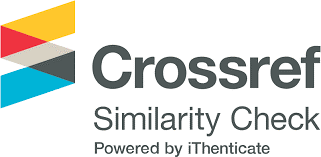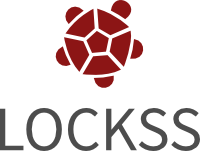Comparison of Auto-Associative Models Based Sensor Compensation Methods Applied for Fault Tolerant Operation in Motor Drives
DOI:
https://doi.org/10.18618/REP.20113.266274Keywords:
Auto-associative Models, Drive Systems, Induction Motor Control, Sensor drift compensationAbstract
Several approaches related to fault tolerant motor control have already been proposed. However, most of them consider the sensors fault-free and work about faults in motors and actuators. Sensors are the fundamentals in any feedback control system. The bad calibration of sensors in motor drives may lead to degradation of performance and even to instability. The purpose of this work is to evaluate some models presented in recent publications to perform on-line sensor fault compensation. In a standard fault tolerant approach, the fault would be detected and the sensor would be isolated. The faulted sensor may have an off- set or scaling error and could still be used if its error is compensated. In this paper, different mathematical solution based on auto-associative models will be evaluated and compared. This technique is described and applied in indirect vector control of an induction motor. Simulated and experimental results are discussed.
Downloads
References
L. Galotto, B.K. Bose, L.C. Leite, J.O.P. Pinto, L.E.B. da Silva, G.L. Torres, "Auto-Associative Neural Network Based Sensor Drift Compensation in IndirectVector Controlled Drive System", Proceedings on the Industrial Electronics Society, 2007. IECON 2007. 33rd Annual Conference of the IEEE, pp. 1009-1014, nov, 2007. https://doi.org/10.1109/IECON.2007.4460357 DOI: https://doi.org/10.1109/IECON.2007.4460357
L. Galotto, J.O.P. Pinto, B. Ozpineci, L.C. Leite, L.E.B. da Silva, "Sensor Compensation in Motor Drives using Kernel Regression", Proceedings on the Electric Machines & Drives Conference, 2007. IEMDC '07. IEEE International, vol. 1, pp. 229-234, may, 2007. https://doi.org/10.1109/IEMDC.2007.383582 DOI: https://doi.org/10.1109/IEMDC.2007.383582
L. Galotto, Análise de Compensação De Falta Em Sensores Aplicada Em Controle De Motores, UFMS thesis, Brazil, 2006.
A. El-Antably, L. Xiaogang, R. Martin, "System simulation of fault conditions in the components of the electric drive system of an electric vehicle of an industrial drive", Industrial Electronics, Control, and Instrumentation, 1993. Proceedings of the IECON '93., International Conference on, vol. 2, pp. 1146-1150, 1993. https://doi.org/10.1109/IECON.1993.339164 DOI: https://doi.org/10.1109/IECON.1993.339164
B.A. Welchko, T.M. Jahns, S. Hiti, "IPM synchronousmachine drive response to a single-phase open circuit fault", Power Electronics, IEEE Transactions on, vol. 17, pp. 764-771, 2002. https://doi.org/10.1109/TPEL.2002.802180 DOI: https://doi.org/10.1109/TPEL.2002.802180
N. Retiere, D. Roye, and P. Mannevy, "Vector-based investigation of induction motor drive under inverter fault operations", Power Electronics Specialists Conference, 1997. PESC '97 Record., 28th Annual IEEE, vol. 2, pp. 1288-1294, 1997. https://doi.org/10.1109/PESC.1997.616935 DOI: https://doi.org/10.1109/PESC.1997.616935
R.B. Sepe Jr., B. Fahimi, C. Morrison, J.M. Miller,"Fault-tolerant operation of induction motor drives with automatic controller reconfiguration", Electric Machines and Drives Conference, 2001. IEMDC 2001. IEEE International , pp. 156-162, 2001. https://doi.org/10.1109/IEMDC.2001.939291 DOI: https://doi.org/10.1109/IEMDC.2001.939291
D.W. Chung, S.K. Sul, "Analysis and Compensation ofCurrent Measurement Error in Vector-Controlled AC Motor Drives", Industry Applications, IEEE Transactions on, vol. 34, pp. 340-345, 1998. https://doi.org/10.1109/28.663477 DOI: https://doi.org/10.1109/28.663477
Y.S. Jeong, S.K. Sul, S.E. Schultz, N.R. Patel, "Fault Detection and Fault-Tolerant Control of Interior Permanent-Magnet Motor Drive System for Electric Vehicle", Industry Applications, IEEE Transactions on, vol. 41, pp. 46-51, 2005. https://doi.org/10.1109/TIA.2004.840947 DOI: https://doi.org/10.1109/TIA.2004.840947
S.M. Bennett, R.J. Patton, S. Daley and D.A. Newton, "Torque and Flux Estimation for a Rail Traction System in the Presence of Intermittent Sensor Faults", Control '96, UKACC International Conference on, vol. 1, 72-77, 1996. https://doi.org/10.1049/cp:19960529 DOI: https://doi.org/10.1049/cp:19960529
M.A. Kramer, "Auto-associative Neural Networks", Computers in Chemical Engineering, vol. 16, No. 4, pp. 313-328, 1992. https://doi.org/10.1016/0098-1354(92)80051-A DOI: https://doi.org/10.1016/0098-1354(92)80051-A
M. A. Kramer, "Nonlinear principles component analysis using auto-associative neural network", AIChE Journal, Vol. 37, No. 2, pp. 233-243, 1991. https://doi.org/10.1002/aic.690370209 DOI: https://doi.org/10.1002/aic.690370209
M.S. Ikbal, H. Misra, B. Yegnanarayana, "Analysis of autoassociative mapping neural networks", in International Joint Conference on Neural Network, 1999. https://doi.org/10.1109/IJCNN.1999.836037 DOI: https://doi.org/10.1109/IJCNN.1999.836037
C.G. Atkeson, A.W. Moorey, S. Schaalz. "Locally Weighted Learning", Artificial Intelligence Review, vol. 11, pp. 11-73, 1997. https://doi.org/10.1007/978-94-017-2053-3_2 DOI: https://doi.org/10.1007/978-94-017-2053-3_2
L. Galotto, J.O.P. Pinto, J.W. Hines, R.O. Sanches, B.N. Carrasco, G.S. Tatibana, "Improvement of Fault Detection with Partial Auto-Associative Models", COMADEM, pp. 357-366, 2006.
K.C. Gross, V. Bhardwaj, R. Bickford, "Proactive Detection of Software Aging Mechanisms in Performance Critical Computers", Software Engineering Workshop, 2002. Proceedings. 27th Annual NASA Goddard/IEEE, pp. 17 - 23, 2003. https://doi.org/10.1109/SEW.2002.1199445 DOI: https://doi.org/10.1109/SEW.2002.1199445
A.V. Gribok, A.M. Urmanov, J.W. Hines, "UncertaintyAnalysis of Memory Based Sensor Validation Techniques", Kluwer Academic Publishers, Real-Time Systems, vol. 27 Issue 1, may 2004. https://doi.org/10.1023/B:TIME.0000019124.24404.e9 DOI: https://doi.org/10.1023/B:TIME.0000019124.24404.e9
Downloads
Published
How to Cite
Issue
Section
License
Copyright (c) 2011 Revista Eletrônica de Potência

This work is licensed under a Creative Commons Attribution 4.0 International License.















